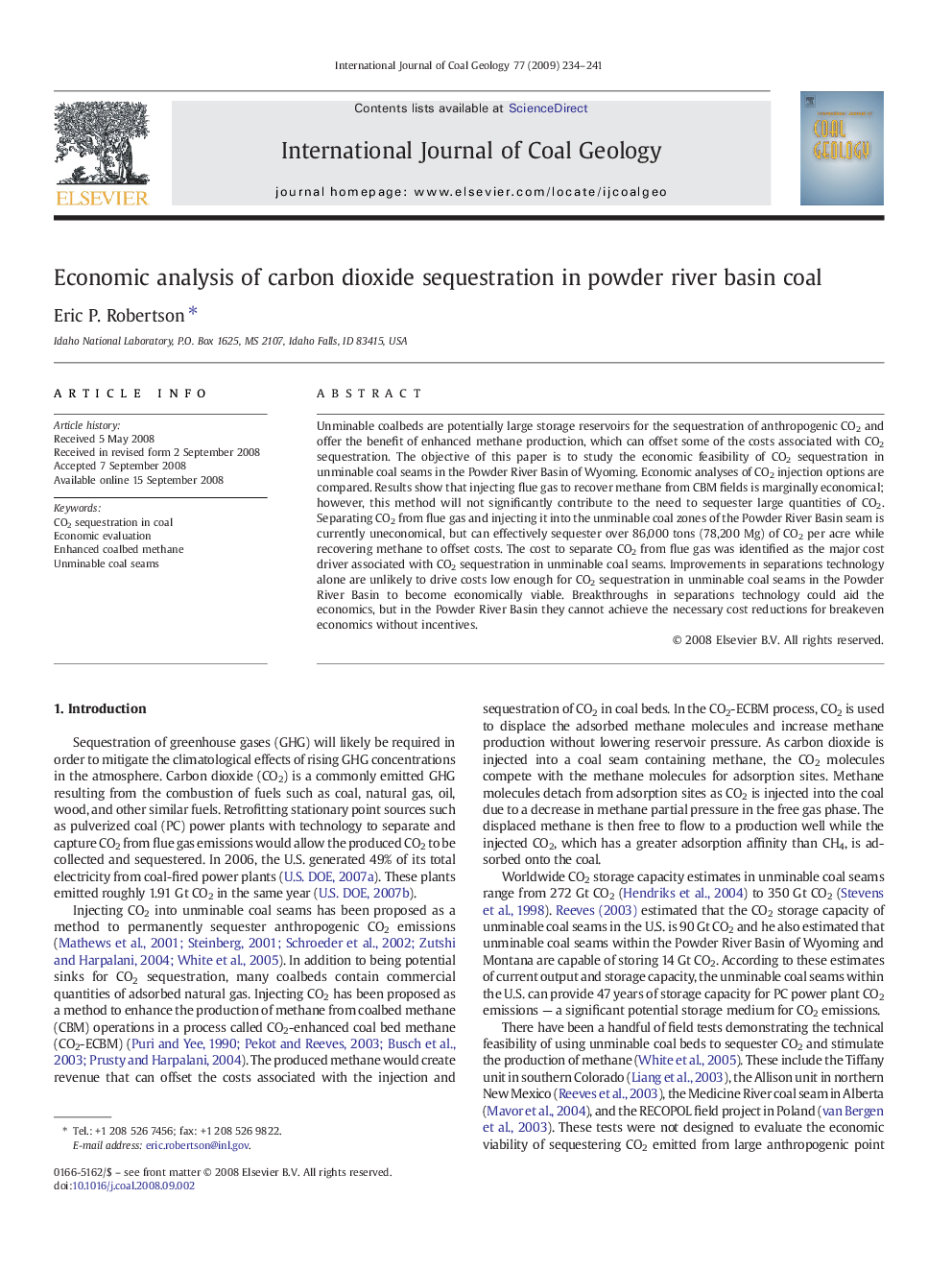| Article ID | Journal | Published Year | Pages | File Type |
|---|---|---|---|---|
| 1754160 | International Journal of Coal Geology | 2009 | 8 Pages |
Abstract
Unminable coalbeds are potentially large storage reservoirs for the sequestration of anthropogenic CO2 and offer the benefit of enhanced methane production, which can offset some of the costs associated with CO2 sequestration. The objective of this paper is to study the economic feasibility of CO2 sequestration in unminable coal seams in the Powder River Basin of Wyoming. Economic analyses of CO2 injection options are compared. Results show that injecting flue gas to recover methane from CBM fields is marginally economical; however, this method will not significantly contribute to the need to sequester large quantities of CO2. Separating CO2 from flue gas and injecting it into the unminable coal zones of the Powder River Basin seam is currently uneconomical, but can effectively sequester over 86,000Â tons (78,200Â Mg) of CO2 per acre while recovering methane to offset costs. The cost to separate CO2 from flue gas was identified as the major cost driver associated with CO2 sequestration in unminable coal seams. Improvements in separations technology alone are unlikely to drive costs low enough for CO2 sequestration in unminable coal seams in the Powder River Basin to become economically viable. Breakthroughs in separations technology could aid the economics, but in the Powder River Basin they cannot achieve the necessary cost reductions for breakeven economics without incentives.
Related Topics
Physical Sciences and Engineering
Earth and Planetary Sciences
Economic Geology
Authors
Eric P. Robertson,
